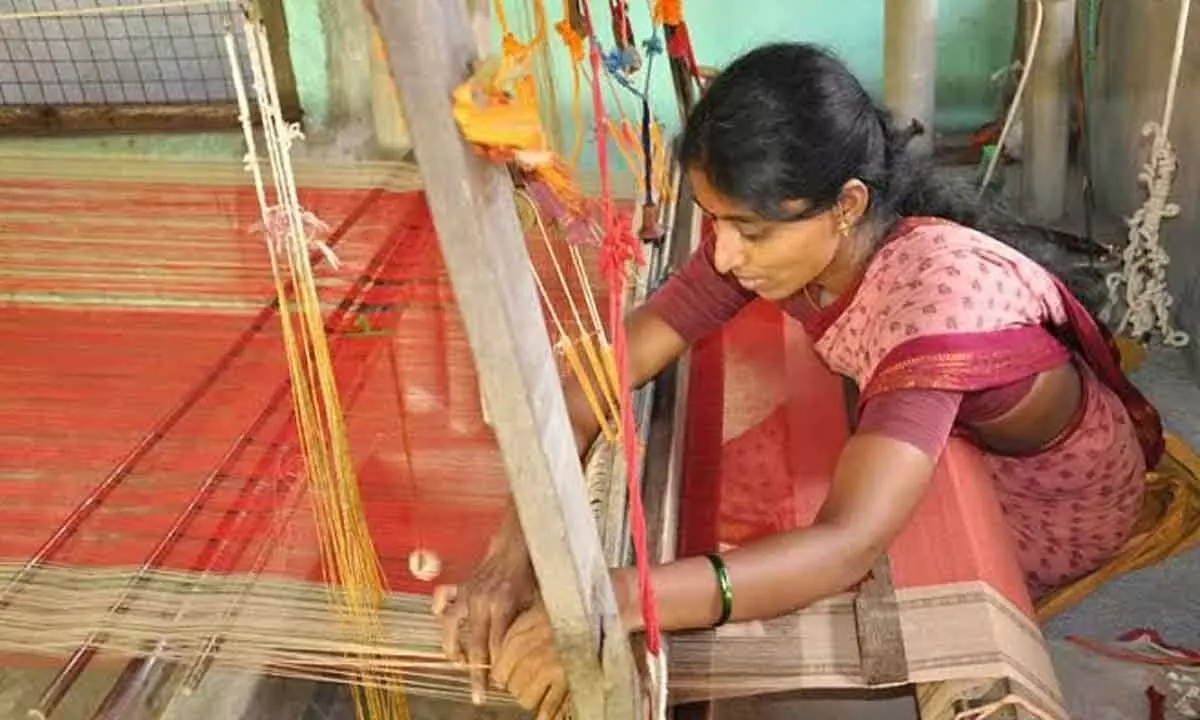Live
- MITS faculty awarded with PhD by VTU
- Sannapureddy takes charge as RTC regional chairman
- Improve state of public parks, civic chief instructs officials
- Education Minister doesn’t know Kannada
- MSMEs churn 10-cr jobs in 15 months
- Tammineni busy consulting followers
- Manoj Kumar Sahoo new DRM of Waltair Division
- Career aspirants encouraged to stay focused on their goals
- Need for skills in pharmacy stressed
- Free entry to Visakha Museum on November 24
Just In
Handloom weavers still reel under economic slowdown post-Covid


(Picture for representation purpose only)
- Around 2.5 lakh household is into weaving, the highest from any district by a huge margin
- With no income, they are struggling to support their families
Anantapur-Sathya Sai districts Post Covid-19, the handloom weavers could not rise from economic slowdown. Their economy had been badly mauled during the 2 years of Covid crisis and in the event of any hand holding by the government, the weavers are living in a state of despondency. Many weavers unable to cope up with the unprecedented crisis had reduced themselves into NREGS workers, according to an APCLC study report on the weavers plight post-Covid.
The price of yarn remains high even today. The sector had 12 government-backed schemes in the 1990s, which halved by 2010s, with only 3 schemes now. The other major blow to the sector was making Mahatma Gandhi Bunkar Bima Yojana (MGBBY) redundant, which had specifically targeted handloom weavers by providing them with insurance. Thus, there is no special insurance scheme for handloom weavers anymore.
Weaving has been an integral part of Syndicate Nagar, Dharmavaram, Yadiki, Somandepalli, Muddireddy palli and Hindupur rural lives, especially in rural areas, and the second-largest activity after agriculture in the undivided Anantapur district. It is a common sight to see rural women working on looms in their own homes. The pandemic has, therefore, not only caused a ripple effect in the handloom industry, but also severely affected the women working in this industry.
The handloom sector in India employs the most number of Indians after agriculture, close to almost one crore Indians. Around 72 percent of these weavers are women. The contribution of handloom sector to Indian economy is as high as Rs 50,000 crores. However, the Union Budget allocated a mere Rs 485 crore to handloom sector despite its high employment generating as well as positive environmental effects.
Around 2.5 lakh household is into weaving, the highest from any district by a huge margin. Most households have two or three children. With no income, they are struggling to support their families. This sudden drop in income means that weavers have to choose between paying for food, medicine, and rent. This was mainly attributed to rising cost of raw materials, especially yarn, which had doubled.
M Malathi Latha, CEO, Kalaseema handlooms, is worried about the future. There is also the possibility of an increase in the price of yarn if and when the situation gets better. Organisations are also facing difficulty in collecting finished products from weavers, but many of them also feel that even if they do manage to collect the goods, they would not be able to sell them.

© 2024 Hyderabad Media House Limited/The Hans India. All rights reserved. Powered by hocalwire.com






